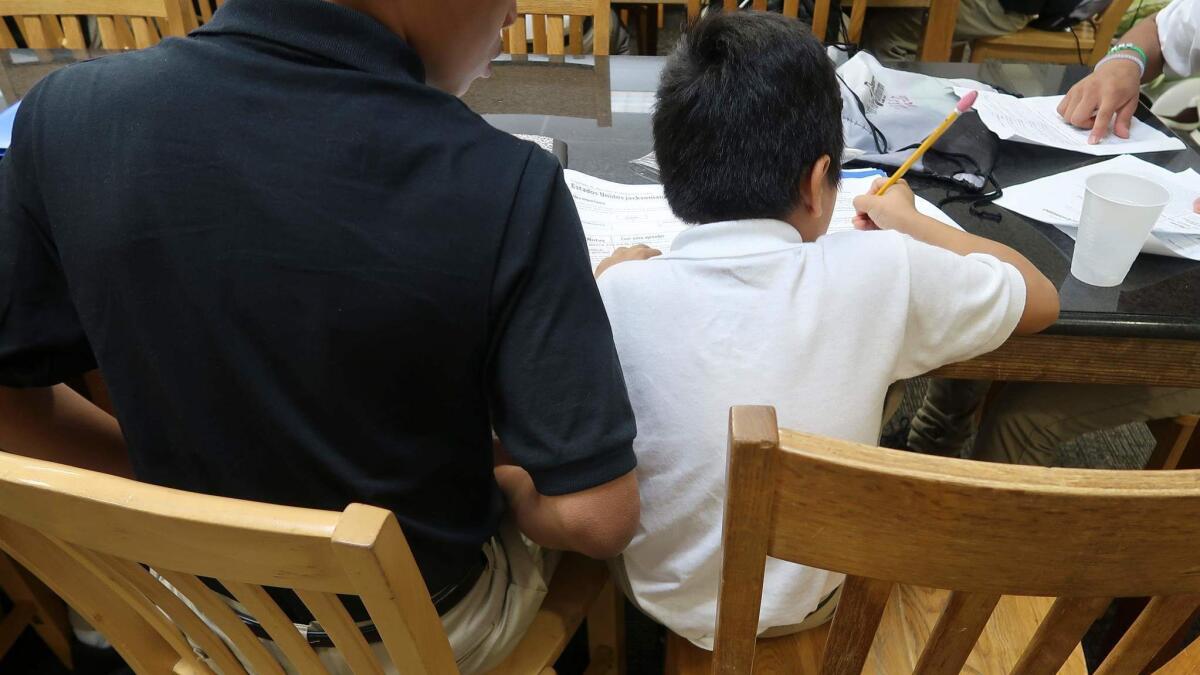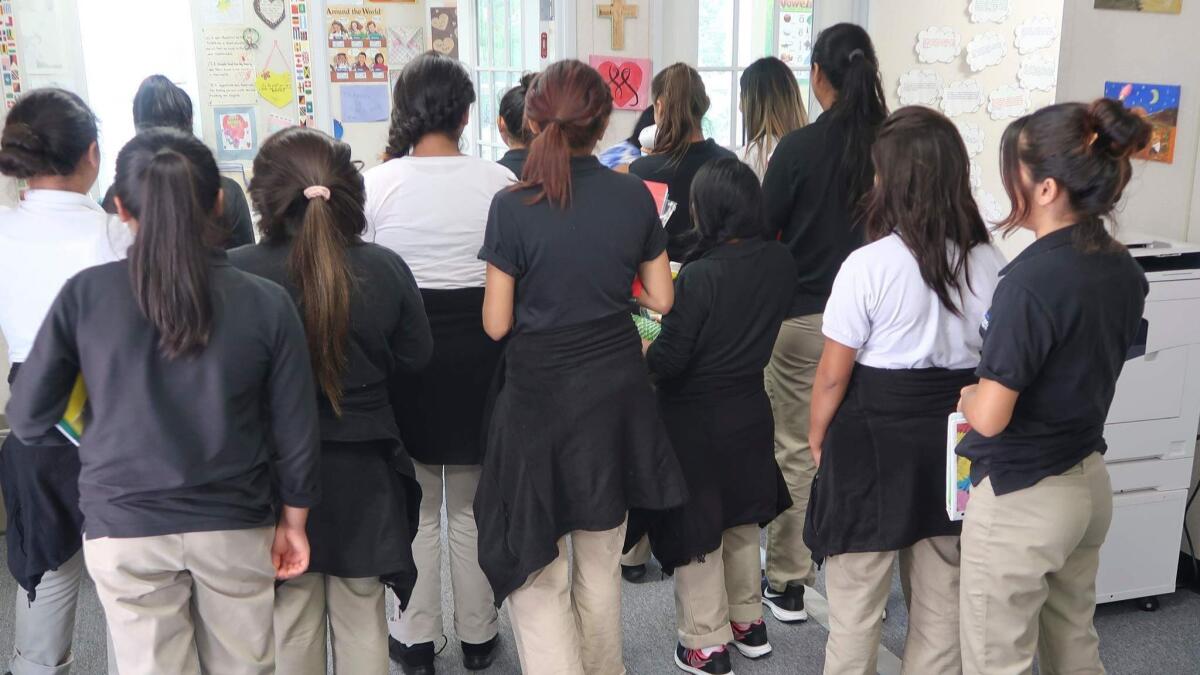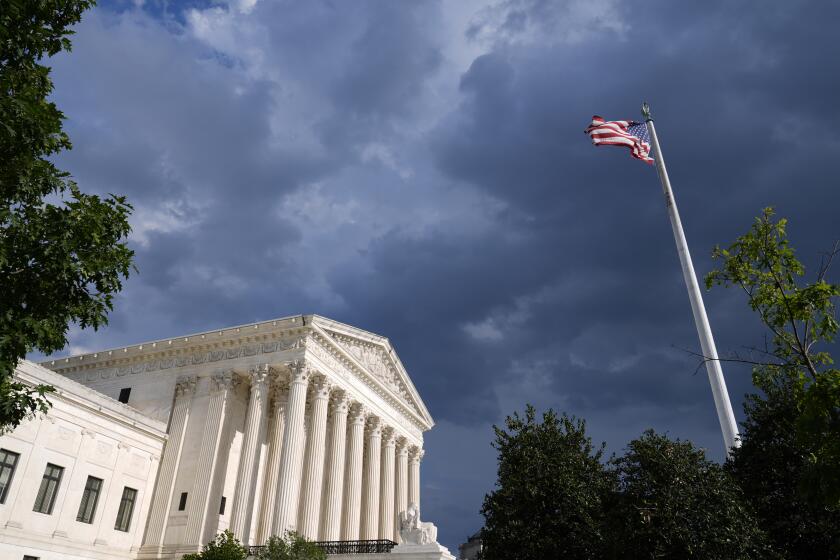Immigration agencies share vague plans to reunite migrant parents and children

- Share via
Reporting from Washington — A week before a court-ordered deadline for the Trump administration to reunite more than 2,500 migrant children and parents separated at the border, immigration officials had few answers for Congress on Wednesday on what is next for the families, in the latest confusing chapter of the family separations saga.
Appearing before the House Judiciary Committee, senior officials from the Border Patrol, the Department of Homeland Security and Health and Human Services said they could not say how many migrant families will be detained — or released — once they are united.
They similarly could not provide policies on how often parents are permitted to speak with their children held in custody elsewhere, or information on how many families have been charged transportation costs to be reunited.
“All of this is still putting undue burdens on families whose children have been torn away from them,” Rep. Pramila Jayapal (D-Wash.) said after the hourlong closed-door hearing.
U.S. District Judge Dana Sabraw in San Diego ordered the administration last month to reunite all the families by next Thursday, July 26.
Under heavy fire for what was widely seen as a draconian policy, President Trump had already reversed course and signed an order meant to stop immigration agents from taking children from their parents if they crossed the border illegally or arrived requesting asylum. But the president’s order would do so by ordering that families be detained together, a move that could face legal challenges as a prior court ruling prohibits the indefinite detention of children.
According to a plan detailed in Sabraw’s court and a flow chart provided to the House committee, adults in immigration custody are being transferred to one of up to eight facilities. Each can then undergo DNA testing, a criminal background check and an investigator’s interview to ensure he or she is the child’s parent.
Children are then transferred to the same facility within 48 hours, and the family is shifted to immigration custody, assuming space is available.
If no problems are found, immigration agents will work with a private contractor to move the reunited families to a “pre-identified release location,” according to the chart, which was prepared by Health and Human Services.
Federal officials have said Immigration and Customs Enforcement has cleared a little over 900 parents, of the approximately 2,500 separated families, to reunify with their children. Other parents will remain in detention if they were given deportation orders, although that figure was not released.

With continued confusion in Washington, immigration lawyers and civil rights groups on the southwest border say they are providing legal assistance to children and parents as best they can.
The family separations crisis began after Atty. Gen. Jeff Sessions announced a “zero tolerance” policy for immigration violations in April. Border Patrol officers soon began separating families who were not authorized to cross the border, putting the parents in jails and their children in separate detention facilities.
The Office of Refugee Resettlement, part of Health and Human Services, stepped in to run a tent city that held 360 teenagers in Tornillo, Texas, a border town southeast of El Paso, and began transferring other minors to more than 100 shelters across the country.
Lindsay Toczylowski, executive director of the Immigrant Defenders Law Center in Los Angeles, said the center was looking into deploying immigration lawyers to help clients that might be moved out of California — a strategy it had never before used.
“We have not been given any specific information from the government about where these families might be headed,” she said. “But we’re hearing from our partners all over the country that there’s no space at the current family detention centers.”
Golden McCarthy, director of the children’s program at the Arizona-based Florence Immigrant and Refugee Rights Project, said its lawyers had explained to the 60 minors they represent that they could be released to parents and family in the United States, transferred to a family detention facility, or deported back to their home countries.
They are “just really saying, ‘We’re not sure what’s going to happen, but we think one of these three things might happen in the next couple of weeks and we want to make sure you’re fully prepared for it,’” McCarthy said.
Immigration advocates have blasted the Trump administration’s family separations policy and now its reunification process, which has been mired in confusion. Critics say it also has transformed the little-known Office of Refugee Resettlement into an arm of immigration enforcement, a shift counter to its humanitarian mission.
Before the family separations, the refugee office had mostly cared for unaccompanied minors — for example, when tens of thousands of children and teens from Central America flooded across the border without their parents between 2012 and 2014 — rather than children taken from their families by the Border Patrol.
Now the office is asking migrant parents and guardians to provide DNA samples and other private data to confirm their identities to immigration officials. Critics said the practice could deter some parents from coming forward to claim their children for fear of deportation.
“It is an erosion or a muddying of the roles,” said Robert Carey, who headed the refugee agency for two years under President Obama. “That creates an ethical challenge for the people who work there.”
More stories from Jazmine Ulloa »
jazmine.ulloa@latimes.com | @jazmineulloa
brittny.mejia@latimes.com | @Brittny_Mejia
More to Read
Get the L.A. Times Politics newsletter
Deeply reported insights into legislation, politics and policy from Sacramento, Washington and beyond. In your inbox twice per week.
You may occasionally receive promotional content from the Los Angeles Times.












